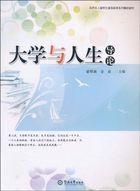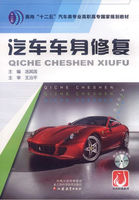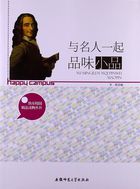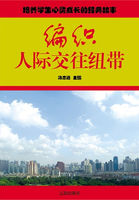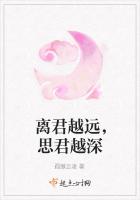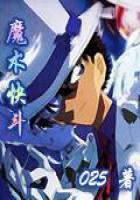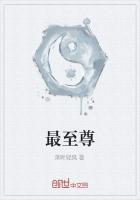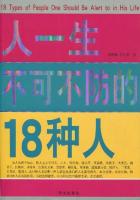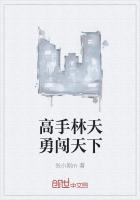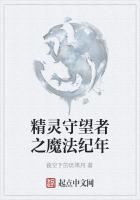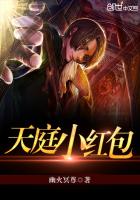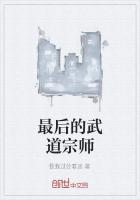Sometimes a black cat would ride away into the sky on the back of the witch’s broom. And on Halloween night we’d dress up in Mom or Dad’s old shoes and clothes, put on a mask, and be ready to go outside. The little kids (children younger than we were) had to go with their mothers, but we older ones went together to neighbors’ houses, ringing their doorbell and yelling, “Trick or treat!” meaning, “Give us a treat (something to eat) or we’ll play a trick on you!”
The people inside were supposed to come to the door and comment on our costumes. Oh! here’s a ghost. Oh, there’s a witch. Oh, here’s an old lady. Sometimes they would play along with us and pretend to be scared by some ghost or witch. But they would always have some candy and maybe an apple to put in our “trick or treat bags”. But what if no one come to the door, or if someone chased us away?
Then we’d play a trick on them, usually taking a piece of soap and make marks on their windows. And afterwards we would go home and count who got the most candy. One popular teen-agers’ Halloween trick was to unroll a roll of toilet paper and throw it high into a tree again and again until the tree was all wrapped in the white paper. The paper would often stay in the tree for weeks until a heavy snow or rain washed it off. No real harm done, but it made a big mess of both the tree and the yard under it, one kind of Halloween mischief.
Vocabulary 词汇
stingy ["stind?i] adj. 吝啬的,小气的,有刺的,缺乏的
lantern ["l?nt?n] n. 灯笼,提灯,灯笼式天窗
hollow ["h?l?u] adj. 空的,空腹的,凹的;虚伪的;
n. 洞,山谷,窟窿
Halloween ["h?l?u"i:n] n. 万圣节前夕(指十月三十一日夜晚)
broomstick ["bru:mstik] n. 扫帚柄,帚柄
yell [jel] vi. 大叫,叫喊;
n. 喊声;
vt. 喊叫着说
witch [wit?] n. 巫婆,女巫;
vt. 迷惑,施巫术
chase [t?eis] vt. 追逐,追捕;
vi. 追赶,追逐
n. 追逐,追击
mischief ["mist?if] n. 恶作剧,伤害,顽皮,不和
Practice
1.Which decoration is necessary for Halloween?
2.Make designs as scary as you can use black paper.
译文
关于万圣节有这样一个故事。有一个叫杰克的爱尔兰人,因为他对钱特别吝啬,就不允许他进入天堂,而被打入地狱。但是在那里他老是捉弄魔鬼撒旦,所以被踢出地狱,罚他提着灯笼永远在人世里行走。
在十月三十一日,爱尔兰的孩子们用土豆和萝卜制作“杰克的灯笼”。他们把中间挖掉、表面上打洞并在里边点上蜡烛。为村里庆祝督伊德神的万圣节,孩子们提着这种灯笼挨家挨户乞讨食物。这种灯笼的爱尔兰名字是“拿灯笼的杰克”或者“杰克的灯笼”,缩写为Jack-o’-lantern,现在拼写为jack-o-lantern。
现在你在大多数书里读到的万圣节只是孩子们开心的夜晚。在小学校里,万圣节是每年十月份开始庆祝的。孩子们会制作万圣节的装饰品:各种各样桔红色的南瓜灯。你可以用黑色的纸做一个可怕的造型——一个骑在扫帚把上戴着尖尖帽子的女巫飞过天空,或者是黑蝙蝠飞过月亮。这些都代表厄运。当然,黑猫代表运气更差。
有时候会出现黑猫骑在女巫的扫帚后面飞向天空的造型。在万圣节的晚上,我们都穿着爸爸妈妈的旧衣服和旧鞋子,戴上面具,打算外出。比我们小的孩子必须和他们的母亲一块出去,我们大一点的就一起到邻居家,按他们的门铃并大声喊道:“恶作剧还是招待!”意思是给我们吃的,要不我们就捉弄你。
里边的人们应该评价我们的化装。“噢!这是鬼,那是女巫,这是个老太婆。”有时候他们会跟我们一起玩,假装被鬼或女巫吓着了。他们通常会带一些糖果或者苹果放进我们的“恶作剧还是招待”的口袋里。可要是没人回答或者是有人把我们赶开该怎么办呢?
我们就捉弄他们,通常是拿一块肥皂把他们的玻璃涂得乱七八糟。然后我们回家,数数谁的糖果最多。还有一个典型的万圣节花招是把一卷手纸拉开,不停地往树上扔,直到树全被白纸裹起。除非下大雪或大雨把纸冲掉,纸会一直呆在树上。当然,这并不造成真正的伤害,只是把树和院子搞乱,是一种万圣节的恶作剧。
练习
1.万圣节必备的装饰品是什么?
2.用黑纸做出你能想到的可怕造型。
1.Orange-paper jack-o-lanterns
05 Mysterious Witch 神秘女巫
Witchcraft, also called black magic, is the power or practices of witches. Western people used to believe that witches had supernatural powers. They were supposed to be able to call up spirits and make them do evil things. Their special helping spirits are called “familiars”, who take the form of animals, particularly cats, snakes, owls, and dogs.
Some people believed witches had the power to change into animals. This power enabled them to travel about secretly. Witches also were said to be able to fly. They flew by riding brooms or rakes, or riding magical animals. Witches had great knowledge of how to make magical potions and charms, which were used to change people’s behavior. Witches were believed to be able to see into the future. They were also believed to have the evil eye—that is, the ability to harm or kill by looking. When crops failed, horses ran away, cattle sickened, wagon broke, women miscarried, or storms destroyed house, a witch was always found to blame. Some of these reputed witches were thought to hold yearly ceremonies called “Witches Sabbath”, a midnight meeting of 12 witches and the Devil.
Nearly all those who were suspected of practicing witchcraft were women, especially old women who were lean and ugly, looking pale and melancholy, or with red hair. In many witch trials of the 17th century in Europe and colonial America, a suspected witch was tied up and thrown into water. If she sank, she was considered a witch and was executed.
In the early Christian centuries, the church was relatively tolerant of magical practices. But in the late Middle Ages European people began to look upon those women who tried to cure diseases by using magic as witches, or the followers of Satan. Many women accused of practicing witchcraft were tortured or even burned to death. Most of them were obviously innocent. The belief in witchcraft declined at the beginning of the 18th century when people began to examine their old beliefs again with a skeptical eye.
Vocabulary 词汇
witchcraft ["wit?krɑ:ft, -kr?ft] n. 魔法,巫术
potion ["p?u??n] n. 一剂,一服,饮剂
wagon ["w?ɡ?n] n. 货车;
vt. 用运货马车运输货物
ceremony ["serim?uni] n. 典礼,仪式,礼节,客套,虚礼
melancholy ["mel?nk?li] adj. 忧郁的,使人悲伤的;
n. 忧郁,悲哀
execute ["eksikju:t] vt. 执行,实行,处死
torture ["t?:t??] vt. 折磨,拷问,歪曲;
n. 拷问,折磨
innocent ["in?s?nt] adj. 无罪的,无辜的,无知的
Practice
1.Which animals are always regarded as familiars?
2.How does witches flying?
3.What kind of women were suspected of practicing witchcraft?
译文
巫术,也称黑魔法,是巫师,尤其是女巫施行的法术。西方人曾相信女巫具有超自然的力量,可呼唤妖魔协助她们作恶。跟随她们的妖魔称为“巫使”,通常以猫、蛇、猫头鹰和狗等动物形象出现。
有人认为女巫也可变化为动物,所以她们可以四处游荡而不为人所知。据说女巫能够飞翔。飞行时或骑在扫帚或耙子上,或骑在某种有魔力的动物背上。女巫懂得如何煎制魔药、制作符录,以蛊惑他人。女巫也有预卜未来的本领。据说她们还有魔眼,即用目光伤害或杀死他人的能力。在中世纪,每当庄稼欠收、马匹走失、牛群遭瘟、车辆损坏、妇女流产或风暴摧毁房舍,总要找一个女巫承担罪责。有人还认为某些女巫每年举行一次女巫安息日聚会。与会者有十二个女巫及魔鬼。
几乎所有被怀疑行巫术的人都是妇女,特别是些瘦削、畸形的老妇人、面色苍白而忧郁或长有红发的妇女。在17世纪的欧洲和北美殖民地,有女巫嫌疑的人往往被捆绑起来,投入水中,如果她下沉,就证明清白;如果浮在水面,就被断定为女巫,处以死刑。
早期欧洲基督教会曾对巫术较宽容,但到了中世纪末,人们开始将使用魔法为人治病的妇女视为女巫或魔鬼的门徒。许多女人被控行巫术,遭受拷打后被施以火刑。其中大多数显然是无辜的。自18世纪启蒙运动开始,人们开始对巫术持怀疑态度,对巫术的迷信不再流行。
练习
1.什么动物常常被当作“巫使”?
2.女巫是怎样飞行的?
3.什么样的女人常常被怀疑是女巫?
1.Cats, snakes, owls, and dogs
2.By riding brooms or rakes, or riding magical animals
3.Old women who were lean and ugly, looking pale and
melancholy, or with red hair
06 Saint Lucia’s Day 瑞典的圣·露西亚节
Saint Lucia’s Day is a Swedish traditional holiday. On December 13th, one of the shortest, darkest days in the long and cold winter, Sweden celebrates the holiday, in honor of Saint Lucia, the Queen of Lights.

